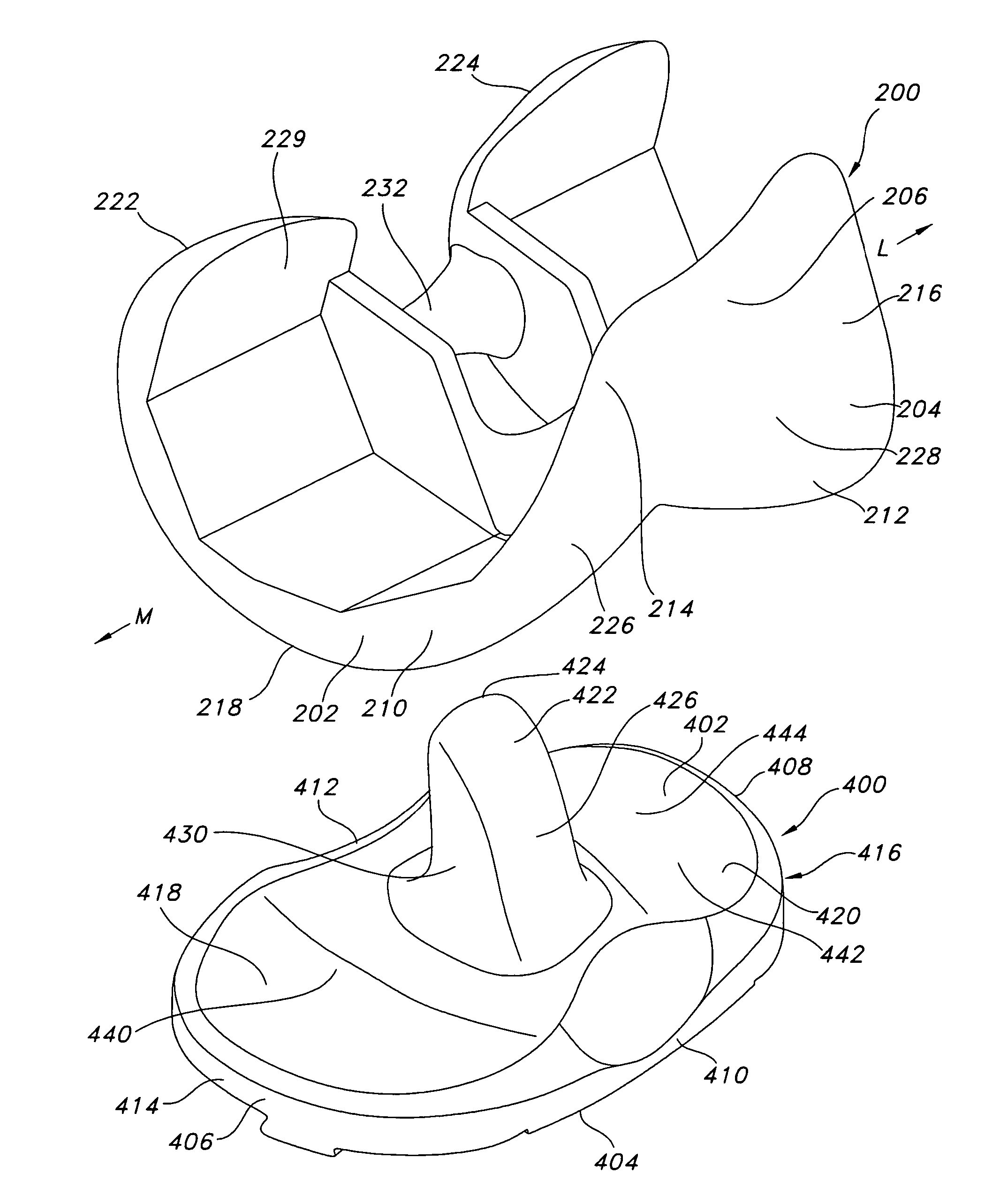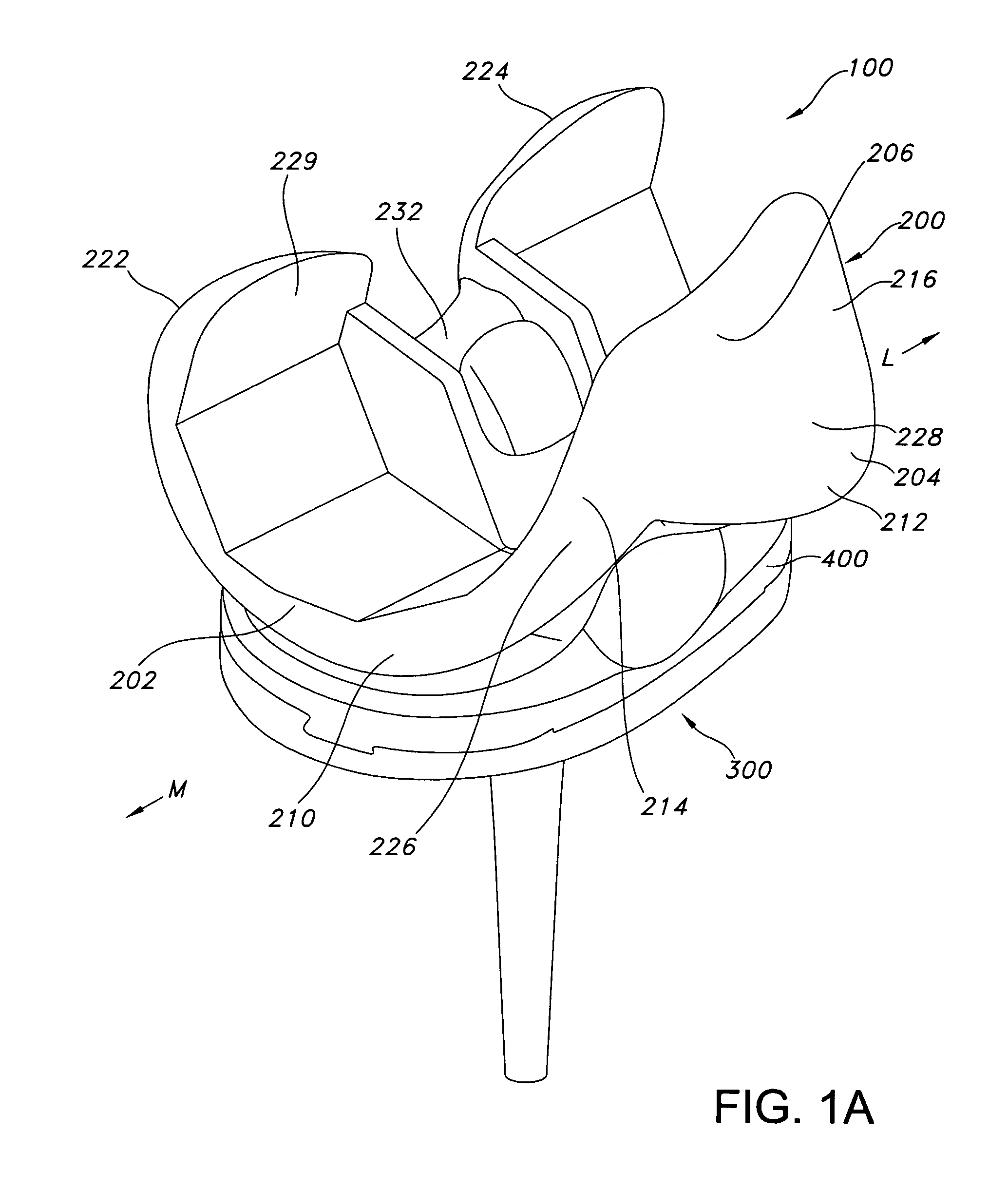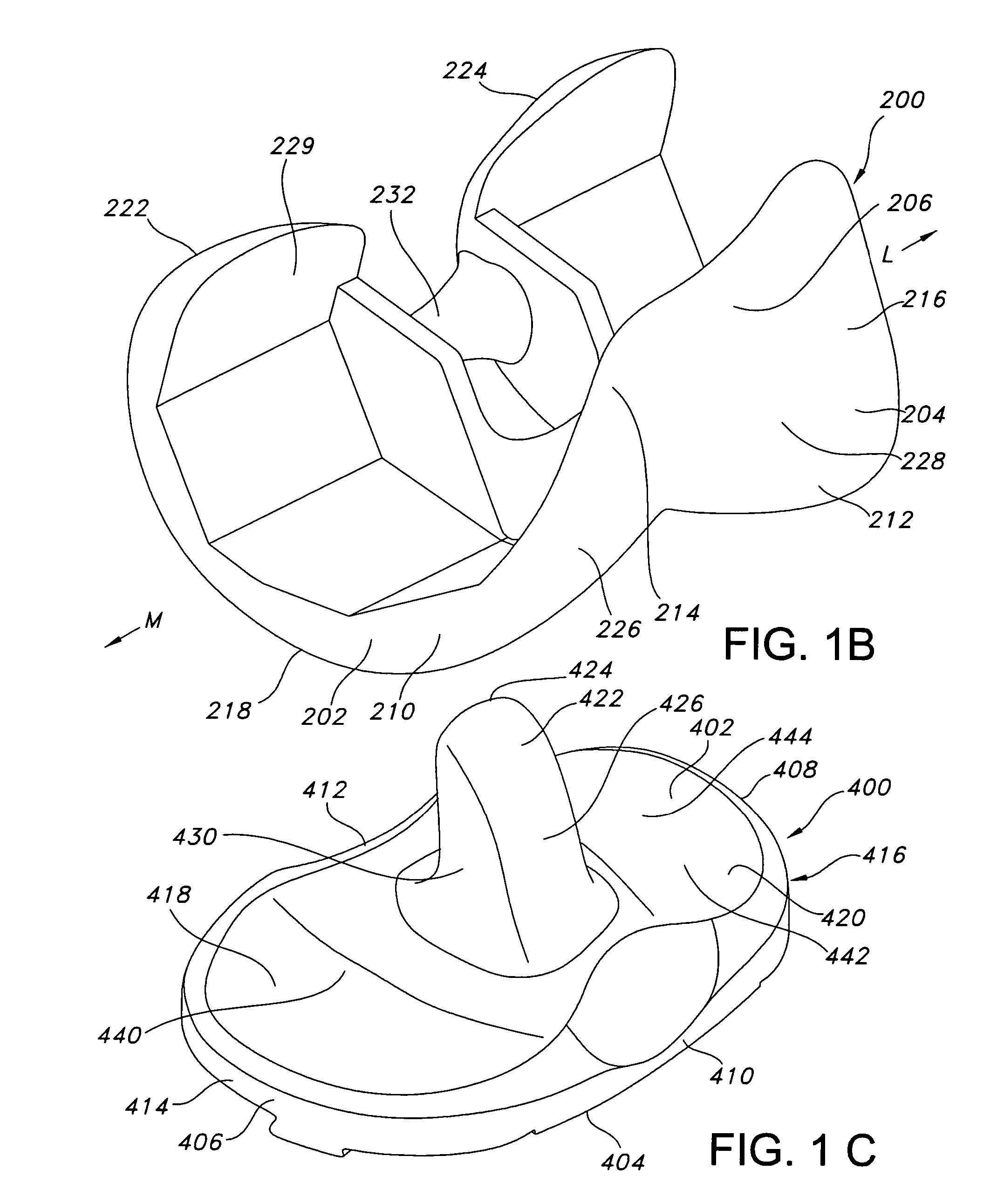High performance knee prostheses
a knee and high-performance technology, applied in the field of knee prostheses, can solve the problems of more limited rom, knee replacement does not function, replacement knee does not achieve normal knee kinematics or motion,
- Summary
- Abstract
- Description
- Claims
- Application Information
AI Technical Summary
Benefits of technology
Problems solved by technology
Method used
Image
Examples
Embodiment Construction
[0073]Various embodiments of the invention provide improved knee prostheses for replacing at least a portion of a knee joint between the distal end of a femur and the proximal end of a tibia.
[0074]While not wishing to be bound by any particular theory, the inventors have discovered that knee prostheses which more faithfully and closely replicated the function, anatomy and physiology of the normal human knee would yield a number of advantages. Among other things, such prostheses would provide an increased range of motion and would function more normally particularly in extension, deep flexion and during normal gait. They would take into account the forces imposed on the knee by quadriceps and hamstrings actuation, forces which great in magnitude but not fully considered in conventional knee prosthesis design. Knee prostheses according to various aspects of the invention recognize that during movement of the knee, particularly during flexion, the position and orientation (kinematics) ...
PUM
 Login to View More
Login to View More Abstract
Description
Claims
Application Information
 Login to View More
Login to View More - R&D
- Intellectual Property
- Life Sciences
- Materials
- Tech Scout
- Unparalleled Data Quality
- Higher Quality Content
- 60% Fewer Hallucinations
Browse by: Latest US Patents, China's latest patents, Technical Efficacy Thesaurus, Application Domain, Technology Topic, Popular Technical Reports.
© 2025 PatSnap. All rights reserved.Legal|Privacy policy|Modern Slavery Act Transparency Statement|Sitemap|About US| Contact US: help@patsnap.com



